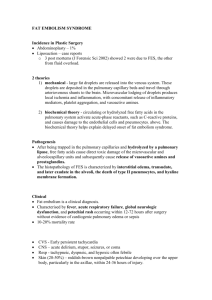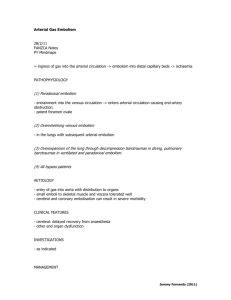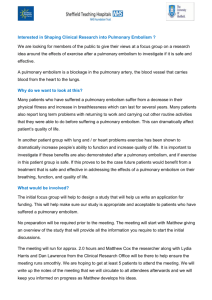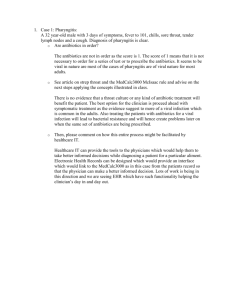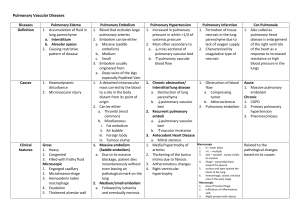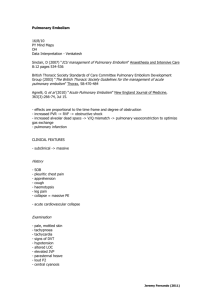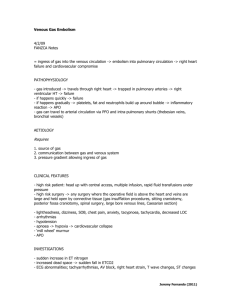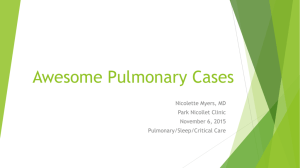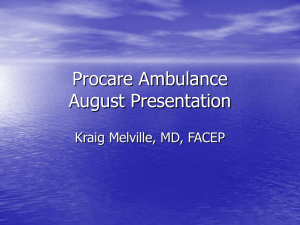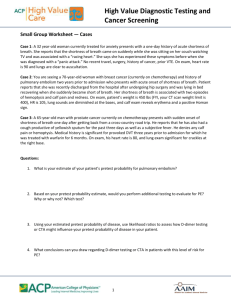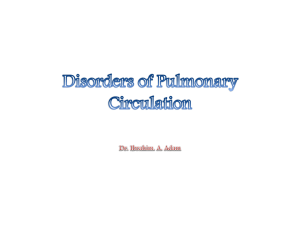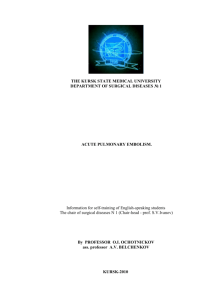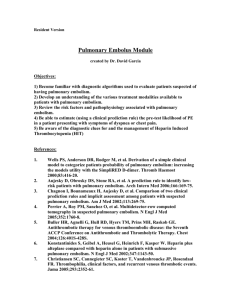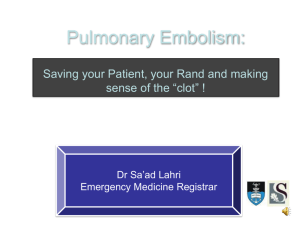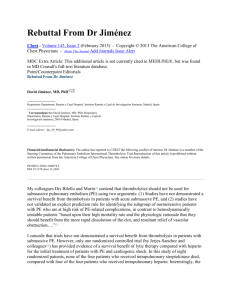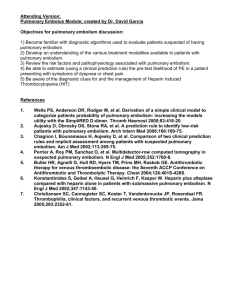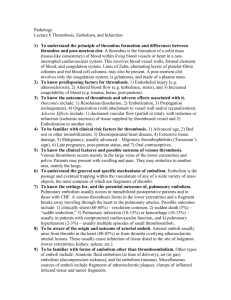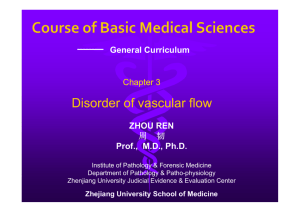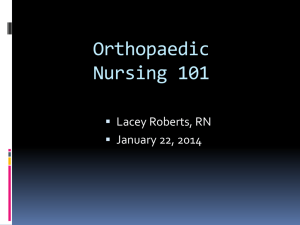Embolism - Virtual Medic
advertisement
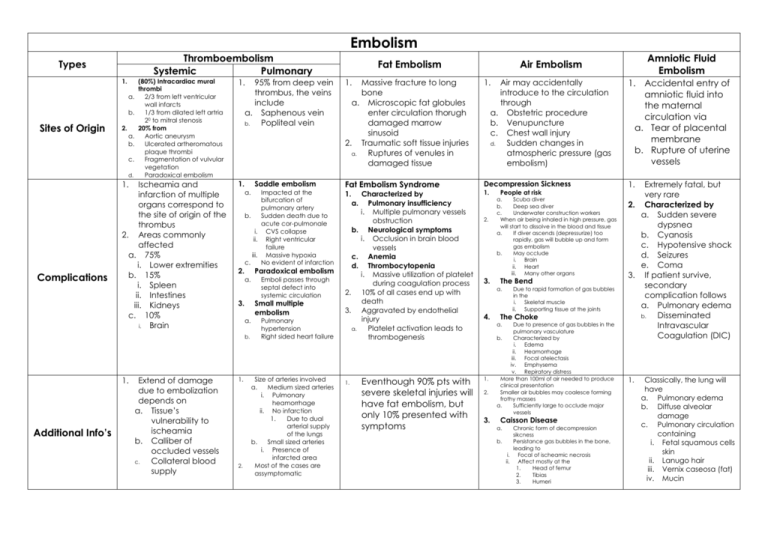
Embolism Thromboembolism Systemic Pulmonary Types 1. a. b. Sites of Origin 2. a. b. c. d. (80%) Intracardiac mural thrombi 2/3 from left ventricular wall infarcts 1/3 from dilated left artria 20 to mitral stenosis 20% from Aortic aneurysm Ulcerated artheromatous plaque thrombi Fragmentation of vulvular vegetation Paradoxical embolism 1. Complications Ischeamia and infarction of multiple organs correspond to the site of origin of the thrombus 2. Areas commonly affected a. 75% i. Lower extremities b. 15% i. Spleen ii. Intestines iii. Kidneys c. 10% i. Brain 1. 95% from deep vein thrombus, the veins include a. Saphenous vein b. Popliteal vein 1. Saddle embolism a. Impacted at the bifurcation of pulmonary artery b. Sudden death due to acute cor-pulmonale i. CVS collapse ii. Right ventricular failure iii. Massive hypoxia c. No evident of infarction 2. Additional Info’s Extend of damage due to embolization depends on a. Tissue’s vulnerability to ischeamia b. Calliber of occluded vessels c. Collateral blood supply 3. 2. Emboli passes through septal defect into systemic circulation Small multiple embolism a. 1. 1. 1. Fat Embolism Syndrome Decompression Sickness 1. a. b. c. d. 2. 3. Pulmonary hypertension Right sided heart failure Size of arteries involved a. Medium sized arteries i. Pulmonary heamorrhage ii. No infarction 1. Due to dual arterial supply of the lungs b. Small sized arteries i. Presence of infarcted area Most of the cases are assymptomatic a. 1. Amniotic Fluid Embolism Air Embolism Massive fracture to long bone a. Microscopic fat globules enter circulation thorugh damaged marrow sinusoid 2. Traumatic soft tissue injuries a. Ruptures of venules in damaged tissue Paradoxical embolism a. b. 1. Fat Embolism Air may accidentally introduce to the circulation through a. Obstetric procedure b. Venupuncture c. Chest wall injury d. Sudden changes in atmospheric pressure (gas embolism) Characterized by Pulmonary insufficiency i. Multiple pulmonary vessels obstruction Neurological symptoms i. Occlusion in brain blood vessels Anemia Thrombocytopenia i. Massive utilization of platelet during coagulation process 10% of all cases end up with death Aggravated by endothelial injury Platelet activation leads to thrombogenesis 1. Eventhough 90% pts with severe skeletal injuries will have fat embolism, but only 10% presented with symptoms 1. 2. 3. People at risk a. Scuba diver b. Deep sea diver c. Underwater construction workers When air being inhaled in high pressure, gas will start to dissolve in the blood and tissue a. If diver ascends (depressurize) too rapidly, gas will bubble up and form gas embolism b. May occlude i. Brain ii. Heart iii. Many other organs The Bend a. 4. Due to rapid formation of gas bubbles in the i. Skeletal muscle ii. Supporting tissue at the joints The Choke a. 2. 3. Due to presence of gas bubbles in the pulmonary vasculature b. Characterized by i. Edema ii. Heamorrhage iii. Focal atelectasis iv. Emphysema v. Repiratory distress More than 100ml of air needed to produce clinical presentation Smaller air bubbles may coalesce forming frothy masses a. Sufficiently large to occlude major vessels Caisson Disease a. Chronic form of decompression sikcness b. Persistance gas bubbles in the bone, leading to i. Focal of ischeamic necrosis ii. Affect mostly at the 1. Head of femur 2. Tibias 3. Humeri 1. Accidental entry of amniotic fluid into the maternal circulation via a. Tear of placental membrane b. Rupture of uterine vessels 1. Extremely fatal, but very rare 2. Characterized by a. Sudden severe dypsnea b. Cyanosis c. Hypotensive shock d. Seizures e. Coma 3. If patient survive, secondary complication follows a. Pulmonary edema b. Disseminated Intravascular Coagulation (DIC) 1. Classically, the lung will have a. Pulmonary edema b. Diffuse alveolar damage c. Pulmonary circulation containing i. Fetal squamous cells skin ii. Lanugo hair iii. Vernix caseosa (fat) iv. Mucin

